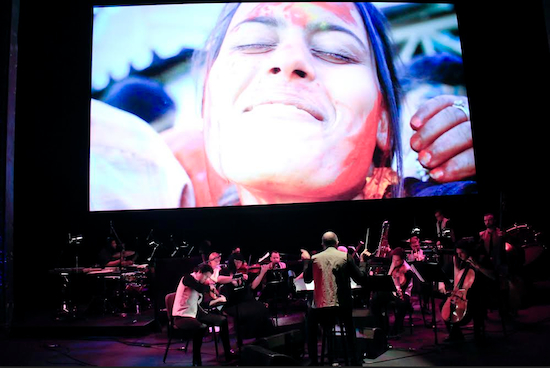Vijay Iyer brings Holi to life at BAM

It can be difficult to classify the music of Vijay Iyer, who played a three-part concert at the Brooklyn Academy Music (BAM) last week. It is certainly unlike most other things you’re likely to hear, with dramatic, looping discord building tension throughout each piece. It’s some part classical, another part jazz — but mostly, it’s him.
Iyer, a jazz pianist and Harvard music professor who holds a PhD in the cognitive science of music from the University of California, Berkeley, gives the impression that he is capable of any manner of complex thought — the more intricate, the better. Hunched, Schroeder-like, over the keyboard of either a grand piano or a laptop computer throughout much of the show, he worked with — if there is such a thing — a casual intensity, building labyrinthine musical constructions with the help of his piano, a group of similarly intense musicians and the computer.
The first piece was commissioned by BAM. After beginning with what seemed like several minutes of darkness and dead silence, the lights gradually crescendoed — along with increasingly frenetic discordant, jazzy piano riffs — to reveal a number of people lying on the floor. The horizontal assembly rose one by one, fashioning stylized hand and body movements that would be familiar to anyone who has been watching protest footage on the news of late. The piece ended with the group standing with their hands up, then out, with a final message flashed across a screen above the stage: #blacklivesmatter.
